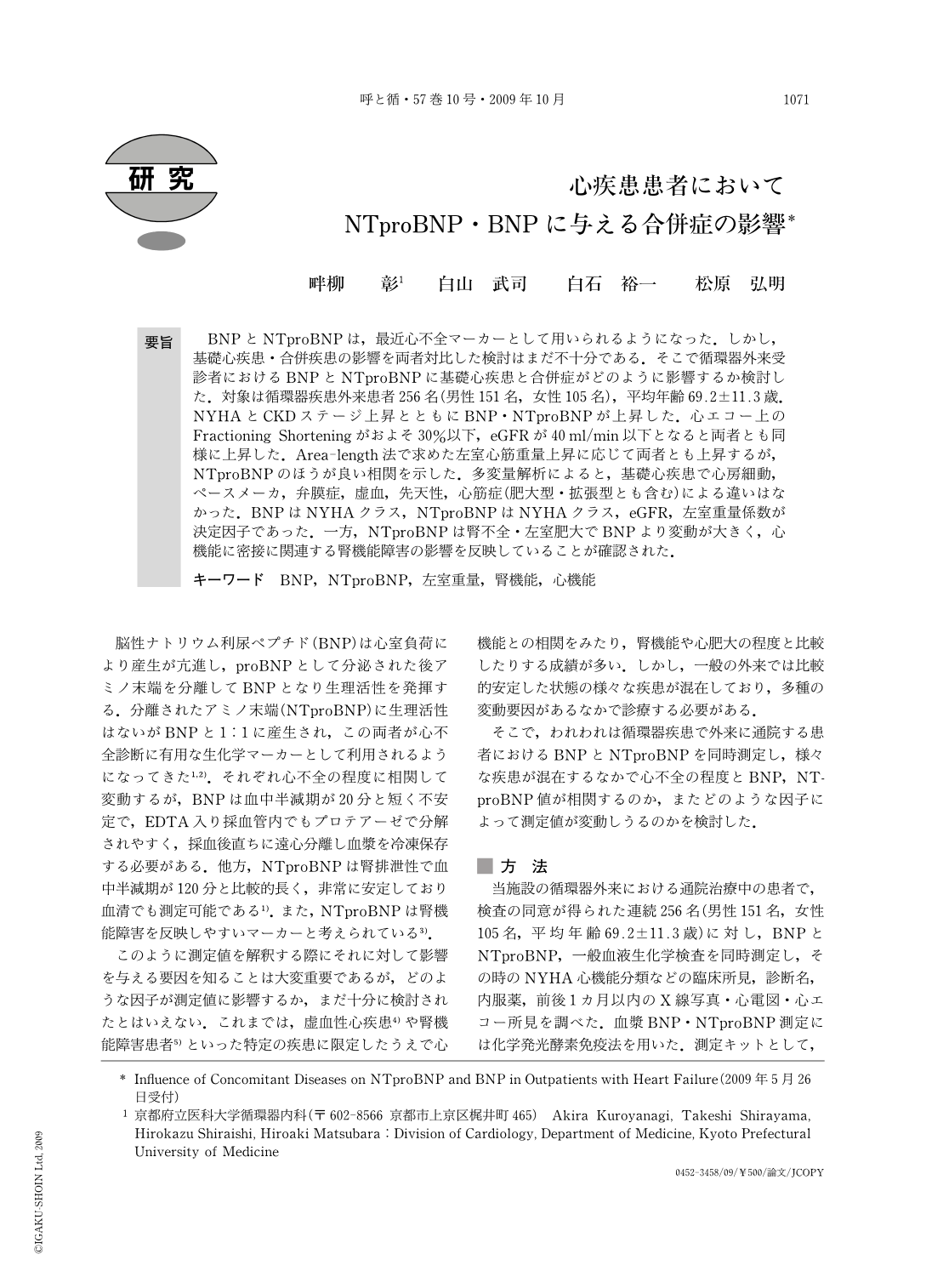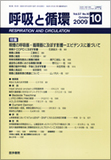Japanese
English
- 有料閲覧
- Abstract 文献概要
- 1ページ目 Look Inside
- 参考文献 Reference
要旨 BNPとNTproBNPは,最近心不全マーカーとして用いられるようになった.しかし,基礎心疾患・合併疾患の影響を両者対比した検討はまだ不十分である.そこで循環器外来受診者におけるBNPとNTproBNPに基礎心疾患と合併症がどのように影響するか検討した.対象は循環器疾患外来患者256名(男性151名,女性105名),平均年齢69.2±11.3歳.NYHAとCKDステージ上昇とともにBNP・NTproBNPが上昇した.心エコー上のFractioning Shorteningがおよそ30%以下,eGFRが40ml/min以下となると両者とも同様に上昇した.Area-length法で求めた左室心筋重量上昇に応じて両者とも上昇するが,NTproBNPのほうが良い相関を示した.多変量解析によると,基礎心疾患で心房細動,ペースメーカ,弁膜症,虚血,先天性,心筋症(肥大型・拡張型とも含む)による違いはなかった.BNPはNYHAクラス,NTproBNPはNYHAクラス,eGFR,左室重量係数が決定因子であった.一方,NTproBNPは腎不全・左室肥大でBNPより変動が大きく,心機能に密接に関連する腎機能障害の影響を反映していることが確認された.
BNP and NTproBNP have been recognized as useful markers of heart failure. The purpose of this study was to reveal factors that increase or decrease these markers and the difference between BNP and NTproBNP in an outpatient setting. Consecutive 256 patients with cardiovascular diseases (male 151, female 105, age 69.2±11.3 y.o.) were enrolled from outpatient clinics in a single institution. BNP and NTproBNP were equally elevated along with the grade of NYHA and CKD. Multiple linear regression analysis revealed that NYHA, left ventricular mass index and estimated glomerular filtration rate were determinant factors of NTproBNP. BNP was less affected by these factors, but by the degree of NYHA. The influence of these factors should be taken into consideration when patients are evaluated with BNP or NTproBNP. Both markers are equally useful to evaluate heart failure.

Copyright © 2009, Igaku-Shoin Ltd. All rights reserved.


